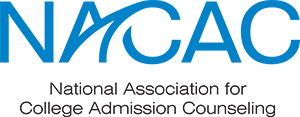FAFSA is getting simpler, or is it? In this post, we'll share insights about the 2020 FAFSA Simplification Act, how it changes the 2024-2025 FAFSA application, and what that means for for families.
If it’s your first time reading something from Collegewise, you should know our organization has been a trusted partner for students and families navigating the college admissions process for almost 25 years. Our services range from academic tutoring and test preparation, to helping prepare students to apply for first-year admission (including assistance with financial aid strategy and applications) and assisting undergraduates with transferring to different colleges. For more information, or to see how Collegewise could help you/your student, pop over to our Home Page and take a look.
Now, on to our discussion!
The History of FAFSA
For students who are US citizens, Green Card holders, or certain types of asylum-seekers, the FAFSA (Free Application for Federal Student Aid) is the starting point for accessing federal and often, financial aid. Typically, for students applying to college in the fall, the form would go live on 1 October, however this year the release is going to be a couple of months later, toward the end of December 2023, due to the 2020 FAFSA Simplification Act.
The FAFSA Simplification Act laid out a set of changes that were to be implemented beginning in the 2021-2022 academic year going through 1 July 2024, with this coming year’s FAFSA being the version that contains all the proposed changes that the US Congress and the Department of Education wanted to implement. Congress’s stated goal was to remove barriers to access for traditionally underrepresented groups by reshaping and simplifying the FAFSA.
If you’d like to read more about this in detail, this link will take you to a great slide deck which was done by the state of Pennsylvania, titled Understanding FAFSA Simplification.
Since the application year timeline for students applying early decision and early action runs from October through about mid-December, the delayed release of the FAFSA will cause a time-crunch for students, and for financial aid administrators who will need to hustle to ensure all of those FAFSAs are processed in a timely manner. It’s still unclear how universities will be handling this, and Collegewise Counselors don’t yet know whether admission or financial aid deadlines will be adjusted to accommodate this, but as soon as we do we’ll let you know!
But Mo, you ask, why simplify the FAFSA anyway? What needs to change?
Let’s dive into some older history for a minute that might help you understand a little better.
In case you’re not aware, and honestly most people who don’t work in financial aid or admission probably aren’t, the FAFSA didn’t used to be 100+ questions! It evolved to that point due to large changes in the cost of education, and consequently, the number of programs created by the federal government to help folks manage those costs.
When and Why Was FAFSA Established?
Initially, the FAFSA was created as part of the 1965 Higher Education Act to determine eligibility for the Pell Grant, which is the foundation for all federal need-based financial aid. When the Pell Grant was first issued to students in 1973, the maximum award amount was $1400/yr, which covered over 92% of a student’s cost of attendance at a public 4-year college, and fully covered the cost at a 4-year private college. However, as Dr. Sara Goldrick-Rab notes in her book on college costs, short-titled decided that college was essential, states began spending less on public higher education and the price of college rose. [Simultaneously], the financial aid system, long intended to make college affordable, failed to keep up with growing student and family need. Student loans became the stop-gap … and nearly 80% of the public’s family income declined.”
So if you take the exponentially rising costs of college and combine that phenomenon with a mostly stagnant average family income due to the 2008 recession, plus little change in the maximum Pell Grant amount to match these conditions, the result is a form that must account for all of that. Unfortunately, that means students must complete a long and kind of intimidating form, which has gotten much less user-friendly over the years. So, in response to their constituents’ complaints, Congress decided to implement some changes they thought would be helpful. Perhaps the most obvious way to make the FAFSA seem less intimidating is to reduce the
The problem is, the simpler and/or shorter the FAFSA appears on the surface, the more complexities and hidden tripwires there are, which can catch students & parents unaware, resulting in mistakes that could have a negative impact on their federal and state financial aid eligibility.
For example, one of the most common mistakes I have seen since I began working as a financial aid professional is in the section on parent assets. Below, you can see the image of what I’m referencing, which I pulled from the paper PDF version of the 2023-2024 FAFSA:
![]()
In case you can’t read that teeny font, it says in bold print, "Don't include the home in which your parents live. See Notes page 9."
If you do as instructed and head to page 9, you’ll see that the notes tell you exactly what types of investments must be included and exactly which types you should leave out. However, what happens in most cases is that parents are doing the online version, trying to get it done quickly, and just assume (understandably!) that “real estate” includes their family home. What an incorrect answer does in this section is it artificially inflates your family’s ability to pay and lowers the student’s eligibility for need-based financial aid; in some cases, it is lowered a lot, especially during the last few years where inflation has caused home values to skyrocket.
So now that I’ve highlighted that issue with previous versions of the FAFSA, let’s talk about some significant changes for the 2024-2025 FAFSA, which will mostly affect middle and low-income families, especially those with multiple children in undergraduate school.
2024-2025 FAFSA Application Changes
As with any change, it doesn't always mean it's a positive change for everyone. This section will highlight the good, the bad, and the ugly that families can expect to see for the 2024-2025 FAFSA.
Positive FAFSA Changes
- The Expected Family Contribution (EFC), which was the resulting number students received once they completed the FAFSA, is no more! Not only was the acronym confusing – is that what I'll pay? Is that how much federal aid my teen will get?? - but it didn't allow for a complete picture of a family’s financial need. The new term is called the Student Aid Index (SAI), and the formula has changed in several ways, a few of which I’ll note in the following points. Overall, this is good news for low-income and mid-low-income families, because they could be eligible for additional federal funding that would have previously been closed to them with the old EFC formula.
- The FAFSA will go from approx. 108 questions down to about 36, so the financial aid application process may seem a little less intimidating for parents and students.
- This year, FAFSA raised the adjusted gross income (AGI) threshold for reporting assets to $60K. Previously, that AGI was $50K or less. That means that this year, a family with $60K or less on Line 11 of their 2022 Form 1040 will not be required to report their assets.
-
Starting 1 July 2023, the maximum Pell Grant amount will be raised to $7,395/year. Families completing the FAFSA who receive an SAI of 0 will automatically qualify for the maximum Pell Grant amount.
Discouraging FAFSA Changes
- Starting with the 2024-2025 FAFSA, the federal need-analysis calculation will no longer consider whether applicants have multiple children attending undergraduate school at the same time. In the recent past, multiple children meant a reduced EFC, but that won’t be the case going forward. This change is very unpopular, and the Department of Education has been criticized by the National Association of Financial Aid Administrators (NASFAA), and many university financial aid professionals as it is unnecessarily punitive, especially for middle and low-income families.
- Small business and farm values will no longer be excluded from the FAFSA, including family farms, however the part of the farm on which the family resides will be excluded (if applicable). This is bad for a couple of reasons, but the main one is that folks who own family farms will now appear (on paper) to have a much higher total asset value. If you live in Iowa or Nebraska, you should know that your states have already spoken up about the harm that this change to the need-analysis formula could do.
- For the 2024-2025 FAFSA, all the same assets that were previously assessed will remain, and there are 2 additions:
a) Child support received will now be considered a parent asset instead of untaxed income.
b) Families with farms will be required to report the farm (minus the part they live on) as an asset. - Now this point is neither discouraging nor positive, and I say that because I doubt it will make a large difference in the SAI calculation: eligibility to have up to $4K in miscellaneous employment expenses deducted from annual income has been expanded to include couples with one income and at least one dependent student, and any independent student as long as they are married or have at least one child. Previously, it was only open to double-income households, in which both parents were employed.
If you would like to read about all of the changes financial aid professionals know as of 19 May 2023, those can be found here, courtesy of the California Student Aid Commission (CSAC). One of our partner organizations, College Aid Pro, also wrote a great article last November on some of the major changes.
New FAFSA Timeline & How to Prepare
If you click this link, you’ll see that the 2024-2025 version of the FAFSA comes with a detailed timeline and phased release of each component leading up to December 2023 when the FAFSA will become available; to view the changes for parents & students, scroll to the bottom of the page.So, how can you be prepared when the 2024-2025 FAFSA is finally opened in late December?
I’ve got a few suggestions to share, which I’ll definitely be encouraging my Collegewise families to act on:
- Get familiar with the previous year’s FAFSA so you can get an idea of what kinds of questions will be asked, in general. Be sure to read the notes on pages 9 and 10, which provide context and instructions for how to respond to certain groups of questions. You can download a PDF copy by clicking this link.
- Go take a look at the draft of the upcoming FAFSA, which can be found by visiting NASFAA’s FAFSA Simplification page where they describe all of the technical details and changes, including the need-analysis calculation shift to SAI from EFC. Most of this info includes highly specific technical language that won't be valuable to non-financial aid professionals; however, you can find the draft FAFSA for 2024-2025 under the External Resources heading near the bottom of the page.
- Gather all of your 2022 financial documents now, so that when December comes, you’ll have everything you need to complete the FAFSA in a timely manner! This article from the Federal Student Aid Commission is from this past application cycle, but it lists 7 Things You Need Before Filling Out the FAFSA, which is generally helpful. Be sure to mentally swap out any reference to 23-24 with 24-25, and any reference for 2021 with 2022 since students applying this fall will be using financial information from 2022.
I’ll leave you all with this: the changes brought about by the 2020 FAFSA Simplification Act aim to streamline the application process and provide more accurate assessments of financial need. While there are both positive and discouraging aspects to the new form, it is important for students and families to stay informed and prepare to navigate the new FAFSA requirements.
Collegewise is here to provide you with the support and guidance you need during what may be a stressful and uncertain period. We understand the challenges associated with the college financial aid application process, and our goal is to equip you with the most valuable information to make this process successful. You're not alone—we're in this together, and our team is dedicated to helping you and your student every step of the way.
About Us: With more than twenty years of experience, Collegewise counselors and tutors are at the forefront of the ever-evolving admissions landscape. Our work has always centered on you: the student. And just like we’ve always done, we look for ways for you to be your best self - whether it’s in the classroom, in your applications or in the right-fit college environment. Our range of tools include counseling, test prep, academic tutoring, and essay management, all with the support of our proprietary platform, leading to a 4x higher than average admissions rates.





